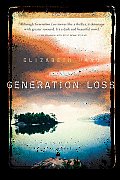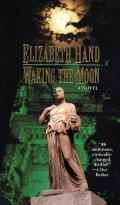
Critics of genre literature — fantasy, science fiction, horror, all those things that in the present century have at last become gentrified and known by more demure names (magic realism, alternative history, etc.) — often dismiss it as "escapist" (like that's a bad thing?), a way out of the mundane world.
To me, it always seemed more like a way in, a means of burrowing into our workaday lives in search of the sublime. That was the original impulse behind gothic art and literature: to evoke awe and terror at the same moment. In 21st century pop culture, that balance has tipped in favor of terror, usually deployed as gruesome cinematic violence (cf Saw). But great literature of the fantastic re-calibrates and celebrates that balance, which I think has been righted of late.
We're living in a Golden Age for fabulist fiction. I wonder sometimes if this efflorescence is a sign of decadence (like that's a bad thing?) in literature itself, an art form trapped in the paradigm shift between the written word and a post-literate, image-driven culture. Or maybe it's just an inevitable and happy by-product of the implosion of the publishing industry, a Big Bang that has led to the proliferation of small presses and online publishers, niche habitats for both literary marabous and established writers looking to spread their (rainbow-hued, bat-shaped) wings.
 Whatever — there's some amazing stuff out there, and a lot of it can be found in the current issue of Conjunctions, long a breeding ground for exceptional fiction that falls between the cracks of mainstream and the marvelous. In their introduction, Bradford Morrow and Brian Evenson sum up the mercurial nature of this "impossible realism" — stories "that reveal something about our daily existence and yet turn away from it to forge odd, disjointed realities that strike the reader simultaneously as familiar and anything but." An exemplar is Theodore Enslin's lovely, uncategorizable "The Spirit of a Lark," set in "a place that did not answer to ordinary timing"; a story that maintains a delicate balance between fairy tale and mimetic fiction, post-apocalypse SF and time travel romance, poetry and prose.
Whatever — there's some amazing stuff out there, and a lot of it can be found in the current issue of Conjunctions, long a breeding ground for exceptional fiction that falls between the cracks of mainstream and the marvelous. In their introduction, Bradford Morrow and Brian Evenson sum up the mercurial nature of this "impossible realism" — stories "that reveal something about our daily existence and yet turn away from it to forge odd, disjointed realities that strike the reader simultaneously as familiar and anything but." An exemplar is Theodore Enslin's lovely, uncategorizable "The Spirit of a Lark," set in "a place that did not answer to ordinary timing"; a story that maintains a delicate balance between fairy tale and mimetic fiction, post-apocalypse SF and time travel romance, poetry and prose.
Betwixt the Between references the work of the great cultural anthropologist Victor Turner, who used the term "betwixt and between" to describe liminal experiences, rituals in which an individual passes a threshold — adolescence to adulthood, our world to the spirit realm, etc. The transit is often perilous, and the participant returns to our world with her/his perceptions irrevocably altered.
 That's the point of a liminal experience, and a great many 21st century rituals embrace it. Tattooing, piercing, immersion in simulated worlds and drug-fueled ramblings through the "real" one — all are ways of crossing a threshold, of connecting with the sublime. Reading is another. Most of the stories in Betwixt the Between will mess with your head. That's also the point.
That's the point of a liminal experience, and a great many 21st century rituals embrace it. Tattooing, piercing, immersion in simulated worlds and drug-fueled ramblings through the "real" one — all are ways of crossing a threshold, of connecting with the sublime. Reading is another. Most of the stories in Betwixt the Between will mess with your head. That's also the point.
I'm in London for a few weeks. Yesterday I walked to the park described in my story "Hungerford Bridge," and headed for the park bench where the emerald foliot appears. There on the grass stood a small group of people, staring intently at the ground while a man excitedly pointed at the grass and described —
Well, something. I couldn't hear and didn't want to see what it was, so I hurried across Hungerford Bridge to meet someone for lunch, at the same place where my narrator meets Max. But that's another story.